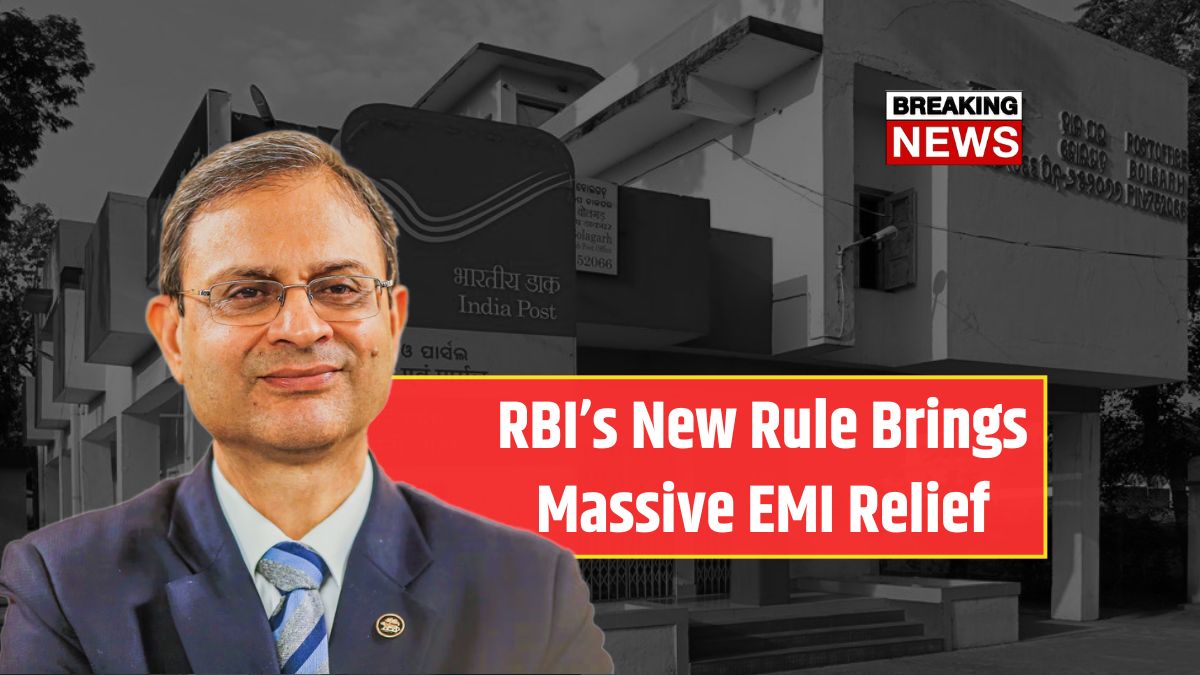RBI Rule Change – Good news is finally here for all home loan borrowers dealing with rising EMIs. The Reserve Bank of India (RBI) has brought in a fresh rule that’s set to make your loan experience much smoother and more transparent. This update directly affects how often your EMIs will be adjusted based on interest rate changes, and the goal is simple – no more waiting forever for rate cut benefits to show up in your monthly payments.
Let’s break down what this new RBI rule means, how it’s going to help you, and what steps you should take next.
What’s the New Rule All About?
Starting in 2025, banks will have to reset the interest rate on all floating home loans at least once every three months. Yes, you read that right. Whether your loan was taken this year or years ago, your bank will now have to review and update your EMI based on the current benchmark rate within a strict time frame.
Until now, banks could reset rates at random intervals – some waited six months, some even longer. This left borrowers stuck paying higher EMIs even when RBI had slashed the repo rate. But now, there’s a timeline every lender must follow.
Why This Rule is a Game-Changer
In the past few years, RBI made multiple repo rate changes – some major cuts too. But most borrowers didn’t see any relief because banks took their time to pass on the benefit. The new rule puts an end to that.
Now, if RBI cuts the rate, your EMI will go down within three months. Simple, predictable, and fair.
How This Will Help You
Here’s why this move could be a major win for your wallet:
- Faster EMI Reductions: No more waiting six months or more for your EMI to drop.
- Better Financial Planning: Knowing when your EMI will adjust helps manage monthly budgets.
- Transparency: Everything is based on the benchmark rate you agreed to while signing the loan.
- No Favors to Banks: Lenders can’t delay benefits to borrowers anymore.
And yes, this rule applies to all existing and new floating rate home loans.
Old vs New Rule – A Quick Look
| Feature | Old Practice | New Rule |
|---|---|---|
| EMI Reset Timing | Varied – could take 6 to 12 months | Fixed – every 3 months |
| Transparency | Low | High |
| Borrower Benefit | Delayed | Timely |
| Financial Planning | Uncertain | Predictable |
| Regulation | Weak enforcement | Strict RBI monitoring |
Let’s Look at a Few Real Examples
Imagine you’ve taken a ₹30 lakh loan for 20 years, and RBI cuts the repo rate by 0.5 percent. Here’s what your EMI might look like:
- Old System: EMI drops from ₹25,000 to ₹24,200, but only after 6 to 12 months.
- New Rule: Same drop, but happens within 3 months.
Now scale that for larger loans, and the difference becomes even more noticeable. Over time, you’ll save thousands – just by getting timely benefits.
What Should You Do Now?
If you’ve already got a floating rate home loan, it’s a good time to:
- Check Your Loan Agreement: Know your reset dates and benchmark type.
- Speak to Your Bank: Confirm they’re ready to follow the new rule.
- Use an EMI Calculator: Update your numbers with the latest rate to plan ahead.
- Think About Switching: If floating still feels risky, you could explore fixed-rate loans.
What RBI Expects Banks to Do
To make sure this rule is followed smoothly, RBI has set clear deadlines for banks:
- Inform borrowers within a month
- Update their internal systems in 60 days
- Apply the first reset by the next quarter
- Submit compliance proof to RBI within 90 days
Basically, RBI is not just setting the rules but also keeping a close eye on their execution.
What Industry Experts Say
Many economists and loan experts are calling this a much-needed reform. They believe this will:
- Make home loans more attractive
- Build more trust in the banking system
- Push more people from the middle class to consider buying homes
Even developers are optimistic, saying this might help increase housing demand in 2025 and beyond.
This new RBI rule makes the loan system more borrower-friendly. With interest rate resets happening every three months, you won’t have to wonder when your EMI will change. It creates a level playing field where banks can’t delay benefits, and borrowers can plan their money better.
If you already have a floating rate loan, keep yourself updated and in touch with your bank. And if you’re planning to take a home loan soon, this could be the best time to jump in.
The policy is a step in the right direction – making borrowing fairer, easier, and less stressful.






